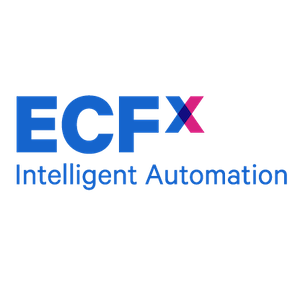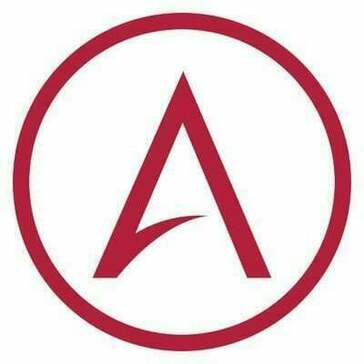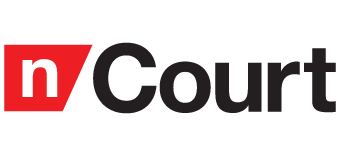Description

Doxpop

ECFX Notice
Comprehensive Overview: Doxpop vs ECFX Notice
Overview of Doxpop and ECFX Notice
a) Primary Functions and Target Markets
Doxpop:
-
Primary Functions:
- Doxpop provides online access to a variety of public records, including court cases, recorded documents, and other government records.
- Offers comprehensive search functions and real-time updates for legal professionals, journalists, and researchers.
- Doxpop also facilitates electronic filing (e-filing) for courts that support this process, helping to streamline the management of legal documents.
-
Target Markets:
- Legal professionals, including attorneys and paralegals, who require efficient access to court records and other public documents.
- Media organizations that need reliable sources of public records for reporting and investigative journalism.
- Government agencies and municipalities looking to efficiently manage public record accessibility.
ECFX Notice:
-
Primary Functions:
- ECFX Notice automates the processing and distribution of electronic court notices, significantly reducing manual workflow processes for legal teams.
- It provides detailed, organized, and easily accessible summaries of court notices, helping firms stay updated on relevant cases and filings.
-
Target Markets:
- Legal firms and corporate legal departments that deal with high volumes of court notices and require efficient tracking and organization.
- Especially beneficial for firms practicing in multiple jurisdictions where managing court notices can become complex and time-consuming.
b) Market Share and User Base
-
Doxpop:
- Predominantly used in jurisdictions where it has established partnerships with local courts and government agencies.
- Its user base mostly comprises legal professionals in states where Doxpop has extensive coverage and features, like Indiana. The precise market share is not commonly disclosed, but the platform is considered significant in its operational regions.
-
ECFX Notice:
- Targets high-volume courts and legal practitioners involved in cases requiring extensive use of court notices.
- Market share details are typically proprietary, but ECFX has positioned itself as a competitive solution in the legal automation and technology market, focusing on scalability for larger firms and associations.
c) Key Differentiating Factors
-
Integration and Accessibility:
- Doxpop: Offers a wide range of public records beyond just court notices, thereby serving a broader spectrum of public data needs. It can provide more comprehensive search functions for various types of government documents.
- ECFX Notice: Specializes in the automation of court notices processing with deep integration capabilities for larger firms seeking to optimize their internal notice handling operations.
-
Jurisdictional Focus:
- Doxpop: Has strong regional influences, particularly in areas where it has established relationships with local entities. This localized strength makes it an essential tool in areas where it operates.
- ECFX Notice: Although also subject to jurisdictional implementation, ECFX's focus is wider on handling multiple courts and jurisdictions with specialization in notice management.
-
Technological Approach:
- Doxpop: Focuses on providing immediate access and detailed searchability to vast databases of public records.
- ECFX Notice: Emphasizes automation and reducing manual processing time, focusing on efficiency and reducing human error in notice management within high-volume environments.
Each of these platforms has carved out a niche by meeting specific needs within legal and public records management sectors, with Doxpop serving those requiring open public records access and ECFX targeting firms needing complex court notice automation.
Contact Info

Year founded :
Not Available
Not Available
Not Available
Not Available
Not Available

Year founded :
Not Available
Not Available
Not Available
Not Available
Not Available
Feature Similarity Breakdown: Doxpop, ECFX Notice
Doxpop and ECFX Notice are tools designed to enhance efficiency in handling legal notices and court case management. Both provide solutions tailored to legal professionals needing timely access to court information. Here's a breakdown of their feature similarities and differences:
a) Core Features in Common
-
Court Notice Automation: Both platforms automate the retrieval and distribution of court notices, reducing the manual workload for legal professionals.
-
Real-time Updates: They offer real-time updates for users to stay current with case developments and court notices.
-
Document Management: Both systems provide document management capabilities, allowing users to organize and categorize court documents effectively.
-
Integration Capabilities: They can integrate with existing case management systems or practice management software used by law firms.
-
Search and Indexing: Both platforms provide powerful search functionalities to quickly locate specific cases or documents.
-
User Notifications: Automatic alerts and notifications keep users informed about important updates and deadlines.
b) User Interface Comparison
-
Design and Layout:
- Doxpop tends to have a straightforward, utilitarian design focusing on functionality. It provides a clear, navigation-centric interface.
- ECFX Notice may offer a more refined user experience with an emphasis on ease of access to notices and personalized dashboards.
-
Customization:
- Doxpop allows users to customize some aspects of their views and settings.
- ECFX Notice often emphasizes user-configurable alerts and personalized interface options for a more tailored experience.
-
Ease of Use:
- Both platforms aim for user-friendly experiences, though the specific ease of navigation might differ based on user habit and preference.
c) Unique Features
-
Doxpop:
- Public Records Access: Doxpop offers extensive access to public records in addition to court notices, which can be a valuable feature for legal research.
- Nationwide Coverage: While focusing on certain regions, Doxpop is working towards broader coverage and may appeal to users needing access to multiple jurisdictions.
-
ECFX Notice:
- AI-Powered Parsing: ECFX Notice uses advanced AI to parse and categorize court notices, potentially offering more intelligent document handling.
- More Sophisticated Rule-Based Automation: This allows for more complex workflows and notification systems, tailored to specific legal practices.
- Focused Practice Area Customization: ECFX Notice can offer more targeted features for specific legal practice areas, enhancing its applicability to niche markets.
Final Thoughts
While both Doxpop and ECFX Notice offer robust solutions for managing court notices, they target slightly different aspects. Doxpop's strength in public records access makes it versatile for legal professionals engaged in research, whereas ECFX Notice’s advanced AI capabilities and sophisticated automation may be more beneficial for firms focusing on efficiency and highly customized workflows. User preferences regarding interface design and functionality could significantly impact the choice between the two, depending on specific needs and practice areas.
Features

Not Available

Not Available
Best Fit Use Cases: Doxpop, ECFX Notice
Doxpop and ECFX Notice serve different purposes within the legal and compliance ecosystems, and understanding their best fit use cases helps optimize their utilization for specific organizational needs. Here's an overview:
a) Doxpop Use Cases
Types of Businesses or Projects:
-
Legal Firms:
- Research and Case Management: Doxpop is ideal for legal professionals requiring access to public court records and case information. It's well-suited for law firms that handle a high volume of cases and need efficient research capabilities.
-
Title Companies:
- Property Records Access: Title companies can benefit from using Doxpop to access public property records, liens, and deeds, which is essential for due diligence in real estate transactions.
-
Government Agencies:
- Public Records Management: Agencies engage with public records for regulatory or informational purposes. Doxpop helps streamline access to records across jurisdictions.
-
Private Investigators:
- Background Checks: Investigators can use Doxpop to gather court-related information as part of comprehensive background investigations.
-
Debt Collection Firms:
- Case Information: Accessing court records to track judgments and legal actions against debtors can be facilitated through Doxpop.
b) ECFX Notice Use Cases
Scenarios Where ECFX Notice is Preferred:
-
Large Legal Practices:
- Automated Electronic Court Filing (ECF) Notices: ECFX Notice automates the processing and management of electronic court filing notices, making it ideal for law firms that handle numerous filings across various courts.
-
Corporate Legal Departments:
- Compliance Management: Companies with in-house legal teams benefit from ECFX Notice by ensuring timely compliance with court deadlines and managing litigation portfolios efficiently.
-
Litigation Support Providers:
- Document Management and Processing: Service providers that assist law firms with heavy litigation workloads can use ECFX Notice to streamline the receipt and distribution of ECF notifications.
-
Insurance Companies:
- Claim Management: Insurance firms involved in litigation over claims find ECFX Notice advantageous for managing and tracking legal notices related to claims.
d) Industry Verticals and Company Sizes
-
Doxpop caters to a diverse range of industries including legal, real estate, and government sectors. It is more versatile for small to medium-sized enterprises (SMEs) and government bodies needing access to a wide array of public records without extensive IT infrastructure.
-
ECFX Notice is tailored more towards large law firms, corporate legal departments, and institutions with significant litigation activities. It is particularly favoured by larger organizations due to its capacity to automate and process high volumes of ECF notices, thereby enhancing operational efficiency and accuracy.
In summary, Doxpop serves a broad audience focusing on public records and case information, which is essential for legal research, property transactions, and investigative purposes. In contrast, ECFX Notice specializes in automating the intake and management of court filings, serving large legal practices, corporate legal departments, and litigation support services. Each tool caters to different needs across industry verticals and company sizes, optimizing workflow and compliance in the legal domain.
Pricing

Pricing Not Available

Pricing Not Available
Metrics History
Metrics History
Comparing undefined across companies
Conclusion & Final Verdict: Doxpop vs ECFX Notice
To provide a comprehensive conclusion and final verdict on Doxpop and ECFX Notice, let's break down the analysis into the requested sections:
a) Best Overall Value:
Determining the best overall value between Doxpop and ECFX Notice depends on the specific needs and priorities of the user or organization. Both products offer unique features that cater to different aspects of legal document and notice management. However, one might edge out the other in terms of cost-effectiveness, feature set, and overall efficiency depending on the context of use.
b) Pros and Cons:
-
Doxpop:
- Pros:
- Extensive database access for public records and legal documents, which may be valuable for research-heavy legal work.
- User-friendly interface that simplifies searching and accessing legal records.
- Consistent updates and access to the latest documents, providing reliability for frequent users.
- Cons:
- May lack integration capabilities compared to more specialized notice solutions.
- Pricing could be less flexible for small firms or individual users needing limited features.
- Potentially less specialized in handling court notices compared to ECFX Notice.
- Pros:
-
ECFX Notice:
- Pros:
- Specifically designed for automating and managing electronic court notices, delivering efficiency to firms handling high volumes of court-related documents.
- Offers automation features that can save time and reduce human error.
- Integration capabilities with other legal practice management systems to streamline workflow.
- Cons:
- Might have a steeper learning curve for those unfamiliar with automation tools.
- Initial setup and integration might require more time and resources.
- Focused niche can limit functionality for firms seeking broader document retrieval services.
- Pros:
c) Recommendations:
-
For users or firms needing extensive access to public records across multiple jurisdictions, especially those involved in research or legal compliance, Doxpop might be the better choice due to its comprehensive database capabilities.
-
For law firms focused on litigation with a high volume of court notices and looking to optimize their notice management workflow through automation, ECFX Notice could offer greater value by significantly enhancing efficiency and reducing manual workload.
-
It is recommended for potential users to conduct a trial or demo of both platforms to understand which tool best aligns with their operational workflow, budget constraints, and specific needs in terms of feature requirements.
Ultimately, the decision should be based on a careful evaluation of the types of documents regularly managed, the volume of notices or records processed, and the importance of system integrations with existing technology within the firm.
Add to compare
Add similar companies



